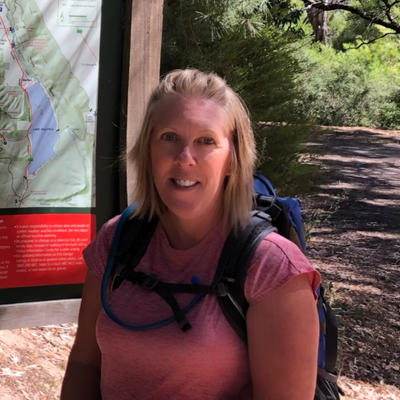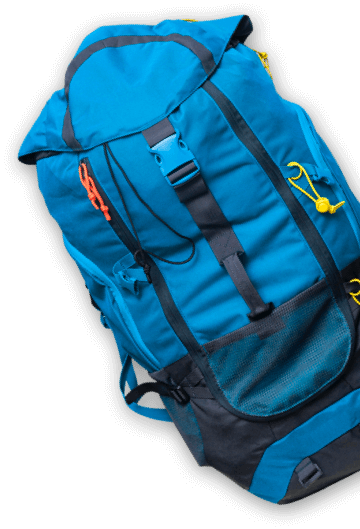01 Oct 20
Why the Mont Blanc trail is a scenic joy
Mont Blanc is not just the largest mountain in Western Europe but it is also considered the birthplace of modern mountaineering. It is an amazing place to visit to see and feel like you are up in the clouds with views unrivalled by anywhere else in the world. Here are my highlights from my Mont Blanc trek.
Scenery
Mont Blanc is the highest mountain in Western Europe at 4808m. While trekking around this spectacular mountain you’ll climb up to an elevation of 2500m and enjoy some of the best views in the world. You’ll be surrounded by this scenery every day, and, when the clouds part, witness dramatic rock faces appearing before you. This dramatic scenery is why this trek is continually featured in the best walks of the world.
Alpine cows
The sound of the cow bells chorusing through the valley is a background sound that will accompany you while you trek, ringing in the distance, or even just next to the trail. Interestingly, the size and type of cowbells vary depending on the species, sex and the age of the animals. Traditionally these bells were used as a sign that the farmer’s animals had been domesticated, and they’re a sign of traditional farming culture continuing high up in all corners of the Alps. Once these bells are attached, the cows often wear them for life. The bells are not just hung on cows; you will hear the chimes from the necks of sheep, goats, sometimes even horses. It’s a wonderful soundtrack to your trek each day along the Mont Blanc trail.
Notre Dame de la Gorge
This neat white historical church marks the end of the village roads and the start of the mountain trails. It is situated by the river just outside Les Contamines before hikers start climbing upwards over the Col du Bonhomme. From the 13th century until the 19th century it was the local parish for residents in the surrounding valleys, and was rebuilt in 1699. Traditionally mountain trekkers would stop here to pray for a safe journey, before heading up into the more remote part of the Alps.
A variety of villages
As you wind your way along the Mont Blanc trail, you pass through local French, Swiss and Italian villages. Les Houches is at the foot Mont Blanc and at the start of the trail. There are a few outdoor equipment shops here in case you have forgotten anything, as well as local restaurants. There are many quaint summer houses along the trail as you wind your way down the valley into Les Contamines, where French locals enjoy quiet weekends away with the stunning backdrop of the Alps. Les Chapieux is a small remote community surrounded by steep hills. It is known for the many wild flowers in this area and the fresh alpine stream through the village. La Fouly is a small Swiss village where you stay overnight and can stock up on the delicious Swiss chocolate at the local supermarket. It’s a pretty village set next to the river with beautiful views of Mont Blanc. Argentiere is a pretty village near the end of the trail with flower filled window boxes, a delicious bakery and some local restaurants and bars to enjoy.
A spa with a view (of Mont Blanc)
After you complete your Mont Blanc trek and are back in Chamonix, reward yourself with some time at the spa at Refuge des Aiglons, Chamonix. It’s a great place to enjoy some pampering, have a massage or enjoy their delicious meals. They offer a great lunch special which includes two hours use of the pool area. The outdoor heated pool offers you stunning views of Mont Blanc and a chance to reflect on your wonderful hiking achievement!
Montenvers train and the ice cave
The Mer de Glace is located on the northern slope of Mont Blanc and is the longest and largest glacier in France. It is 7kms long, 200m deep and one of the most popular attractions in the Chamonix valley. Sub glacial waters from the Mer de Glace are even used during summer for the generation of hydroelectricity. Like all glaciers, there is movement each year in its size. Winter snowfall adds to its size but summer melting and global warming are reducing its size, sadly with an overall decrease each year. Access the Mer de Glace on the funicular Montenvers railway, which is a beautiful journey through the valley up to an altitude of 1913m. Alternatively during summer you can take the dramatic chairlift up to Plan de l’Aiguille (mid station of the Aiguille du Midi cable car) and enjoy a beautiful two hour hike across to the Mer de Glace. We loved having lunch on the sunny terrace at Grand hotel du Montenvers, this is a restaurant with a view!

Written By
Amanda Thompson
Amanda is RAW Travel's specialist for Slovenia and the European Alps. With a passion for mountain treks and a wealth of industry experience, she's your go-to guru for planning the ultimate adventure. Former PT turned trekking expert, Amanda has the best training tips and insights to ensure your journey through the Alps is nothing short of epic.

